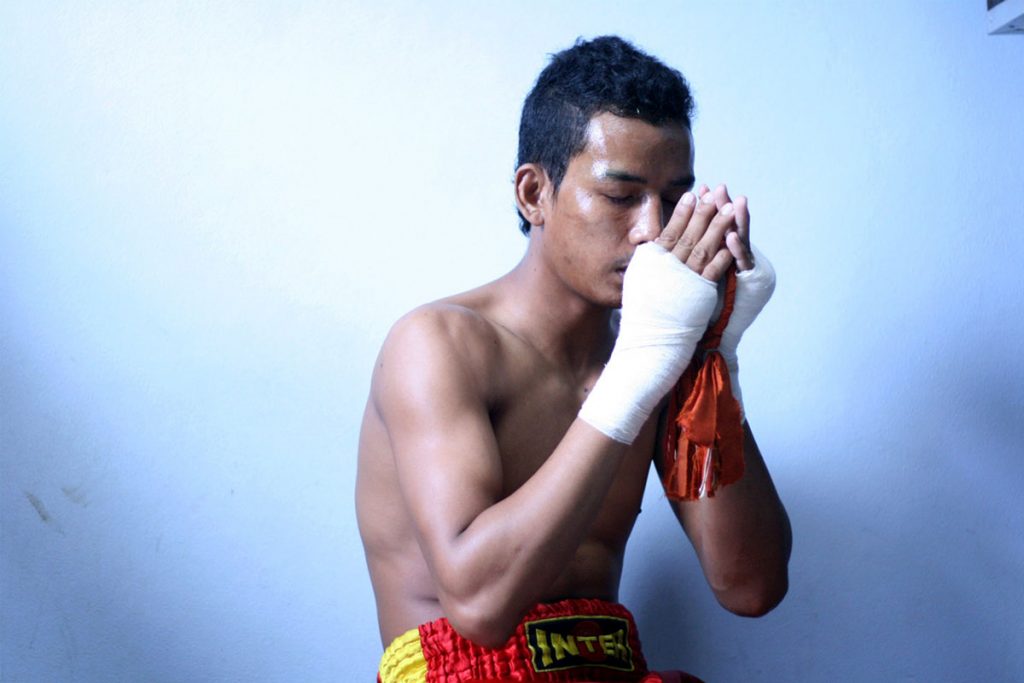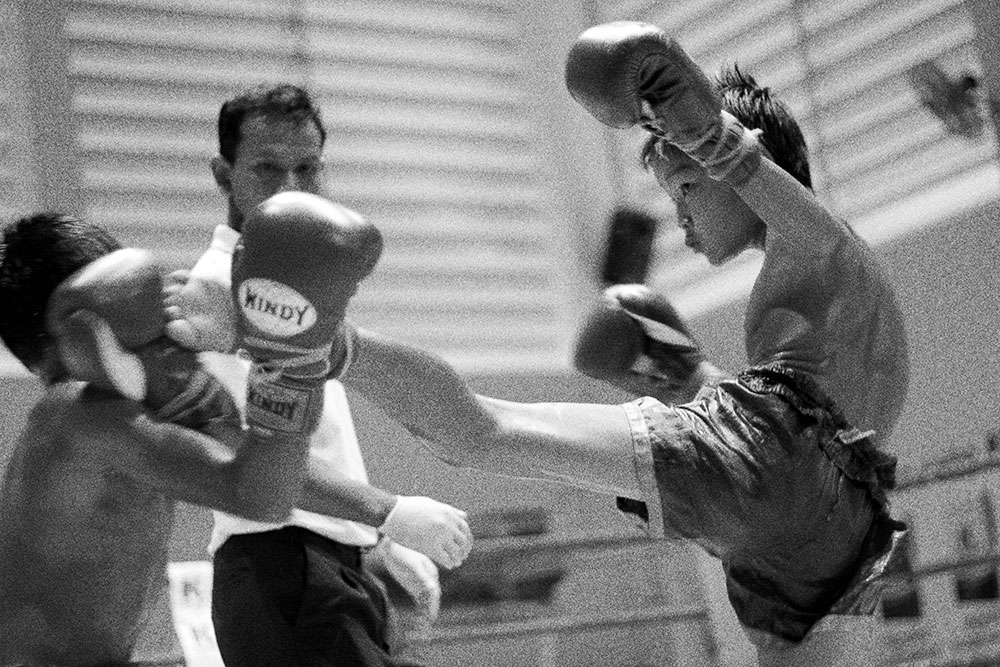
Reachesay Baba says a blessing before a match at TV5 stadium in Ta Khmau, just south of Phnom Penh. Religion and superstition often play a big part in fight preparation. Nearly all fighters whisper incantations for good luck as they circle the ring ahead of the fight, and many wear protective tattoos inked and blessed by old masters.
A friend had said there was a new boxing gym just past the Japanese Bridge in Phnom Penh. Paddy Carson, a former bare-knuckle champion from Durban, had recently moved from Pattaya, Thailand, and opened the Angkor Youth Boxing Club in a sweltering old warehouse on the northern edge of Cambodia’s capital.
There, in the back, in a small ring with fraying ropes and a muddied blue canvas, Kru Paddy hammered the importance of straight punches and strong cardio into a dozen wiry young fighters with championship dreams.
http://mekongteahouse.com/photography/kun-khmer/

 If I haven’t mentioned it before, I’ve been working with Magnum photographer
If I haven’t mentioned it before, I’ve been working with Magnum photographer